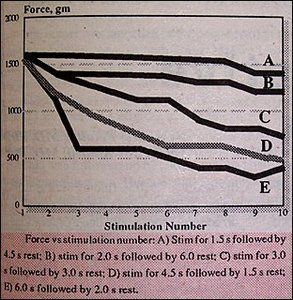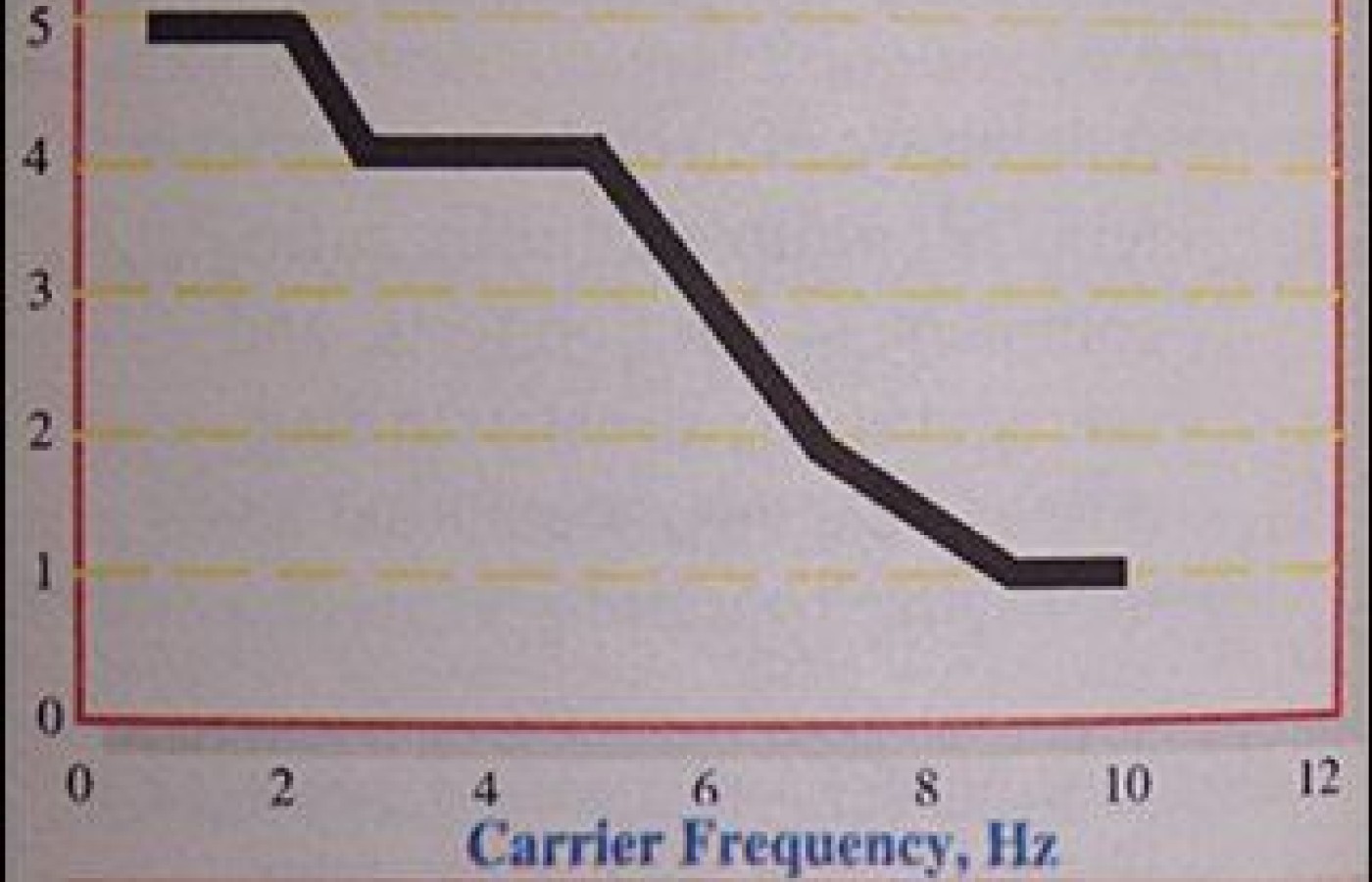New York's highest court of appeals has held that no-fault insurers cannot deny no-fault benefits where they unilaterally determine that a provider has committed misconduct based upon alleged fraudulent conduct. The Court held that this authority belongs solely to state regulators, specifically New York's Board of Regents, which oversees professional licensing and discipline. This follows a similar recent ruling in Florida reported in this publication.
A Discussion of the Madison Protocols for Medium Frequency Stimulation
Introduction
Ever since ancient Greek physicians used electrically charged torpedo fish to treat patients, man has sought a way to harness the power of electricity to affect the healing of the body.
The late 1700s produced a flurry of research by Galvani, Volta, and Jallabert to produce better and stable sources of electricity and to observe its effects on muscle and nerve tissue. The first to introduce wide use of electrical stimulation to excite nerves of human extremities was Duchenne de Boulogne (1876). He placed electrodes over nerve trunks and muscle motor points and noted the absence or presence of excitability of the muscles. This established the integrity of the muscle and its nerve, and was the forerunner of modern electrodiagnosis.
Modern electrical stimulation is used in many different applications: stimulation of paralyzed and normal muscles; cardiac pacing; restoration of bladder function; pain control; and urinary incontinence, just a few of the varied uses of controlled electrical stimulation of smooth and striated muscles.
Many researchers including Melzak, Wall, Peckman, Mortimer, and Marsolais have attempted to determine optimum clinical parameters to establish equipment protocols for the various types of electrical stimulation. This paper is offered as a review of the work done by Moreno-Aranda and Seireg at the University of Wisconsin to establish optimum parameters for the use of medium frequency stimulation for over-the-skin muscle stimulation. It will also include comments regarding the impact of this research on the electrical stimulation known as Russian Stim.
The Moreno-Aranda and Seireg study was undertaken to quantitatively investigate the important stimulation parameters and stimulation pattern which provide efficient, controllable, and painless over-the-skin isometric muscle contraction. Before the study began a review of available studies of electrical stimulation of muscles was completed, including the works of Andrianova et al. (1977), Shpak and Kolesnik (1977), Del Paso and Delgado (1978), and Hambrecht and Reswick (1977). From this review, the following factors were considered in setting the study protocols:
(a) From the standpoint of pain, human tissue is more sensitive to stimulation current at low frequencies than high frequencies. Therefore to minimize skin irritation and pain it is necessary to use high frequencies.
(b) The maximum electrical muscle activity occurs at a frequency ranging between 50-110 Hz. To stimulate the maximum possible number of muscle fibers, it is necessary to use an electrical signal with a frequency close to this range.
(c) The refractory period of a skeletal muscle cell is approximately 4-5 ms. For optimum performance, the electrical stimulator should provide a rest period of at least 5 ms.
(d) The stimulator should be able to produce a muscle contraction, maintain it for a certain period of time, and then let the muscle relax for another period of time.
(e) Pain, itching, tickling and all uncomfortable sensations caused by over-the-skin electrical stimulation should be minimized.
(f) To reduce electrode polarization, the signal should change its polarity every time it becomes zero.
A sinusoidal wave of medium frequency was used since it meets all the requirements mentioned above.
Stimulation Parameters
Medium frequency stimulation range is between 1kHz (1,000) and 100 kHz (100,000). For the purpose of the Moreno-Aranda and Seireg study, a medium frequency sine generator capable of generating a sinusoidal carrier wave between 500-10,000 Hz and modulated between 10-500 Hz was used. Duty cycle of the current was variable from 0-100 percent. On/off time was variable from 1-10 seconds.
To determine maximum force of contraction vs. level of pain vs. stimulator parameters, a ring shaped transducer was attached to the middle and ring fingers. Force of contraction of the finger flexor muscles was then measured using various mixtures of carrier frequency, stimulation frequency, amplitude, on/off times, and duty cycle.
Results
When analyzing maximum force of contraction, the following parameters were determined to be the most efficient:
However, using these parameters to achieve maximum force caused the test subjects enough pain that the researchers abandoned the above as viable optimum protocols.
When a subjective pain scale is used, the optimum carrier frequency shifts in favor of 10 kHz as illustrated below.

Moreno-Aranda and Seireg provided proof positive that 10,000 Hz carrier waves are the most comfortable to use and provide best patient compliance.
Long-Term Stimulation
Moreno-Aranda and Seireg also conducted tests to study the effects of repetitive muscle stimulation on muscle fatigue. Their findings, as illustrated below, establish that the most efficient repetitive stimulation is achieved using an on time of 1.5 seconds and an off time of 4.5 seconds for a total of 60 seconds. This is followed by a rest period of 60 seconds. Using this protocol can achieve an almost equal force from one contraction to the next.

Their study concluded that when optimum repetitive muscle contraction is desired, it is best to shorten the stimulation time to inhibit muscle fatigue during subsequent contraction cycles.
Conclusions
Based on all the results obtained and analyzed in their initial study, Moreno-Aranda and Seireg determined that the following parameters should be used for over-the-skin electrical:
These parameters have been named the Madison Protocols.
These results were later verified by additional studies on other muscles of 25 test subjects of different age, sex, weight, skin characteristics and national origin.
Comment
The original work of Nemec in superimposing two medium frequency currents of equal amplitude but different frequencies was to determine the viability of creating a beat frequency deep in the tissues. His work was not intended to determine optimum equipment parameters. That was left to others. It appears that current manufacturers of medium frequency stimulators have overlooked the independent work done by Moreno-Aranda and Seireg at the University of Wisconsin. Why has this happened?
After 15 years of designing and manufacturing various types of electrical stimulators, it is the opinion of the author that the vast majority of stimulators available are simply copies of previous successful devices that copy the features of other successful designs. This copy cat approach to design can be very successful in the marketplace but if too many copies are introduced, originality is lost and the reasons for the original design can be forgotten.
This has, in my opinion, happened with medium frequency stimulators. The vast majority use the same features only because of the competition. Many are actually produced by a single manufacturer and sold under different labels. The result is not an agreement over the parameters to be used, but rather a "don't rock the boat" approach to marketing. The author calls for a return to equipment design that embraces proven independent studies for safety and effectiveness.
About Russian Stim
After review of the research by Moreno-Aranda and Seireg, the author poses an opinion that the original parameters of Kotz (1977) to create the medium frequency stimulation known as Russian Stim may not be valid. It has been determined that the 2,500 Hz carrier used by Kotz has no special properties and in fact is not the most effective for optimum muscle contraction or reduction of skin resistance.
In fact, the parameters of Russian Stim, as currently used, may be unnecessarily painful to the patient and be an inefficient method of muscle contraction. The author invites additional comments on this subject.
References
Moreno-Aranda J, Seireg A. Electrical parameters for over-the-skin muscle stimulators. J of Biomechanics, 1981, vol 14, No.9, pp 579-585.
Galvani L (1792). Viribus electricitates in motu musculari. Moduna. Translated by Montraville Green, R. (Commentary on the effect of electricity on muscular motion) by Licht E., Cambridge University Press, 1953.
Duchenne de Boulogne, GBA (1867). Physiology in Motion, translated by Kaplan EB and Saunders (1959).
Hambrecht FT, Reswick JB (eds. 1977). Functional electrical stimulation. In: Biomedical Engineering and Instrumentation Vol. 3, Marcel Dekker, New York.
Jallabert JL (1748). Experiences sur l'electricite. Genova, Quoted from Therapeutic Electricity and Ultraviolet Radiation, New Haven, 1959.
Mortimer JT, and Peckham PH (1973). Intramuscular stimulation. In: Neural Organization and its Relevance to Prosthetics. pp. 131-146, Intercontinental Medical Book, New York.
Joseph Ventura, DC
6502 Barton #106
Shawnee, Kansas 66203
(913) 384-0404



